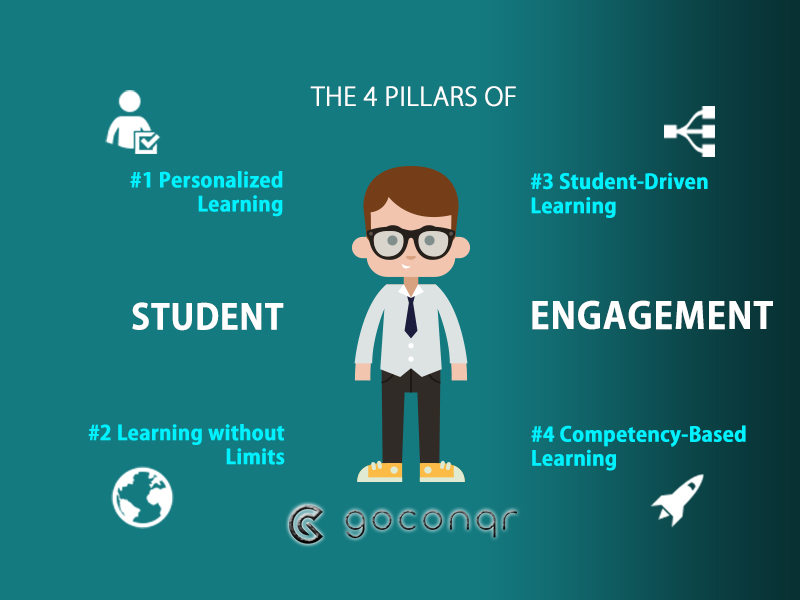If your students could choose not to attend your classes, would they?
This is a very sensitive question that a lot of teachers are afraid to ask themselves.
Sadly, this happens in most traditional classrooms:
As you can see, less than 50% of students voluntarily attend classes. However, the fact that only 10% of students actively engage in the classroom is even more worrying.
To break this trend and provide students with a truly valuable learning experience, it is important to see them as members of a learning community and not just as the brains needed to fill up with information.
The concept of student engagement is based on this idea, ensuring students are involved in their own learning process and that given the option, they would always choose to attend classes.
The 4 Pillars of Student Engagement
To build a learning process where students are actively engaged, 4 important factors need to be taken into consideration:
1. Learning without Limits: Why limit learning in the classroom from 10am to 11am? The fewer boundaries we have in learning, the better. Learning should be a continuous process.
2. Competency-Based Learning: It is great to witness a student’s ability to memorize formulas but if these cannot be used to solve problems, what’s the point? The different stages of learning should be set according to practical competences and not external factors such as hours of study or class attendance.
3. Personalized Learning: Not everyone has the same needs, so different methodologies must be applied. In order for students to remain engaged in the classroom, it is vital to identify the strengths and weaknesses of each student and handle them separately.
4. Student-Driven Learning: Students should be responsible for their own learning and success. Here, we are referring to a learning process adapted to their individual interests and goals.

Student Engagement Routine
We can design various learning processes with the help of these 4 pillars, always taking into consideration the specific subject, the class level and, of course, the targeted students.
Using GoConqr, we are going to present a simple scenario where Geography is being taught to high school students.
Start by creating a Study Group in GoConqr to ensure there are no limitations to the students’ learning (learning without limits). Within this group, you can start discussions, polls and share resources.
Different types of study resources can be shared to give students the ability to explore different learning styles. Resources can even be shared with a specific student for a more personalized learning.
To broaden the student’s knowledge, GoConqr offers tools that can be used to create study resources. They can also avail of more that 2 million study resources from the GoConqr public library. These resources can be used by students for some intensive research on a particular topic or to explore their own personal interests (student-driven learning).
One of the main features of the GoConqr study groups is the Group Analytics. With this, teachers can monitor students’ knowledge and progress over time. Evaluating and providing students with much needed feedback is easier with this tool. (competency-based learning).
Now we encourage you to use this basic example to increase student engagement in your classroom. At GoConqr, we make it easy to create and distribute engaging learning content. If you have any questions or are interested in some of the tools we have mentioned, do not hesitate to contact our team.


2 thoughts on “4 Pillars to Increase Student Engagement in the Classroom”
Comments are closed.